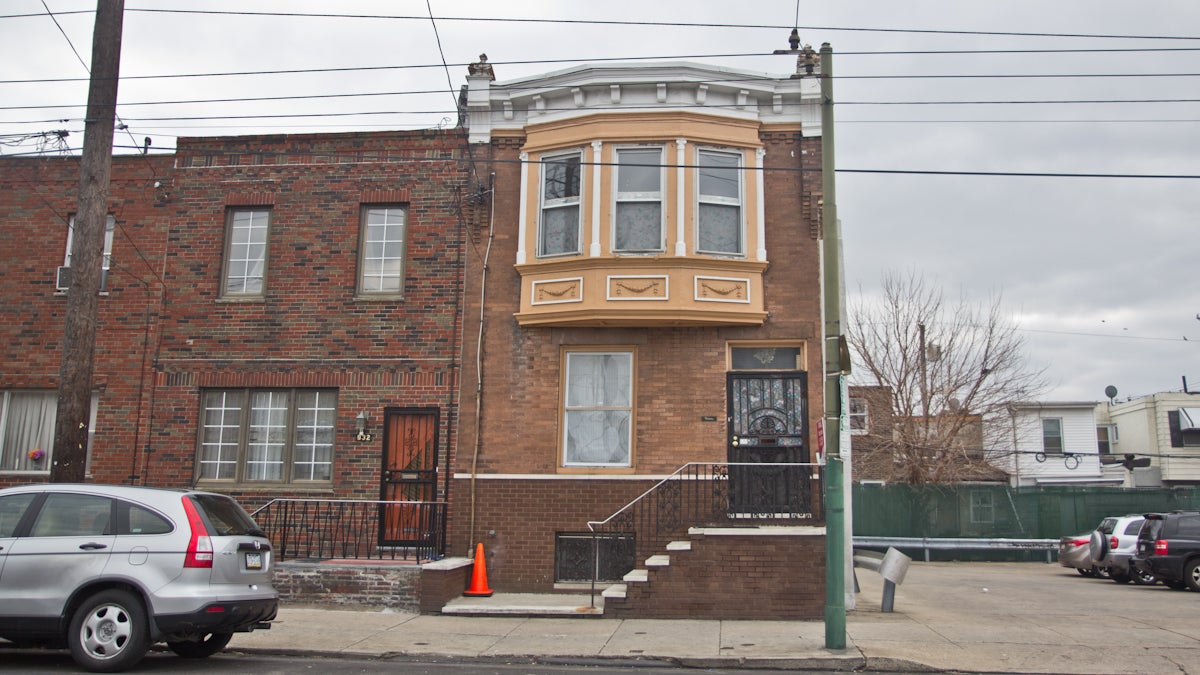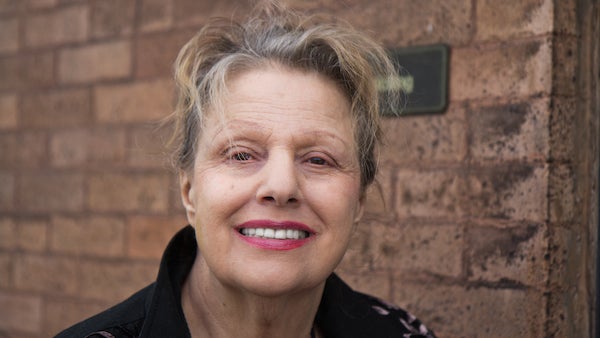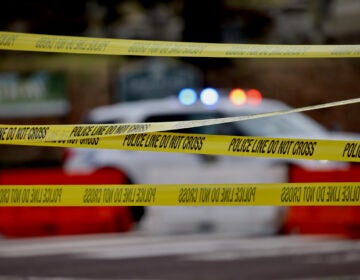Philly historical commission gets offer it can refuse – preserving home of slain mob boss Angelo Bruno
Listen
Home of the late famed criminal Angelo Bruno in South Philadelphia. (Kimberly Paynter/WHYY)
Should the dwelling of a one-time Philadelphia Mafia boss be blessed as a city landmark?
It’s a question at the heart of a debate boiling up in South Philadelphia ever since the home of the late Mafia godfather Angelo Bruno on Snyder Avenue was nominated as worthy of preservation to the city’s historical commission.
Bruno, known as the “Gentle Don,” was gunned down in front of his South Philly home in the spring of 1980.
His daughter Jean, who goes by Jeanne, has looked after the place ever since.
 Jeane Bruno is the daughter of famed criminal Angelo Bruno. (Kimberly Paynter/WHYY)
Jeane Bruno is the daughter of famed criminal Angelo Bruno. (Kimberly Paynter/WHYY)
“Look at my hair. My God. I usually put on makeup. Not that it matters, I’m 75,” said Bruno when she answered the door of the former Mafia’s boss’ house.
She remembers her dad a little differently than most. He never cursed. He liked his macaroni al dente. And when she was little, the Cosa Nostra figure taught her how to play “Happy Birthday” on the piano in their vestibule.
“I’m not saying he’s a gangster, but I am saying, you don’t know how hard it is to keep people in line,” Bruno said.
Recently, Jeanne Bruno received a piece of mail informing her that the largely unremarkable row home was being nominated for a place on the city’s historic register.
Historian Celeste Morello, who submitted the application, said the home is part of Philadelphia’s heritage.
“And it’s an interesting story, and the history affects all of us,” said Morello, who has also nominated several artifacts and structures connected to Italian Catholic churches.
Morello once sold real estate for Jeanne Bruno’s late husband, Ralph Puppo. An academic and crime writer, Morello has also penned a book about Angelo Bruno. In the nomination papers for Bruno’s 1,125-square-foot house at the end of a strip of garden-variety South Philly row homes, she writes that the FBI’s surveillance of the Gentle Don helped establish modern corruption laws used to prosecute members of organized crime syndicates.
“We’re not out to give a kind of positive spin on anything that caused harm to people and made people suffer,” Morello said. “We’re trying to just use them as a way to educate.”
The idea of historically highlighting the once-infamous site has generated some push back.
“It’s not necessary, and I don’t see what it does for us in South Philadelphia,” said former City Councilman Frank DiCicco. “And it kind of stereotypes Italian-Americans.”
He said the history of the mob in South Philly is not something that should be celebrated. It’s a legacy that he’s personally had to combat.
“I know the prejudices. People look at me and say, ‘Oh, you’re one of them Italian guys from South Philly, you remember the Mafia?’ That’s the part that I think we need to get away from,” DiCicco said.
Other Mafia-connected properties have been designated historical for a distinctive architectural style, such as the Porter Street place of late mafioso Phillip “Chicken Man” Testa.
Still, should the commission grant its approval, Angelo Bruno’s house would be the first home of a former gangster to be protected for social reasons in the city.
“That’s your history, and you want to remember all of it. You don’t want to whitewash it and remember the parts that you feel proud of,” said The Philadelphia Inquirer’s architecture critic Inga Saffron. “I mean, I don’t think preserving this house means you’re glorifying the mob; you’re simply acknowledging that this history existed in Philadelphia.”
Maybe one day, Saffron said, the house could serve as a museum dedicated to the city’s Mafia history.
“He lives no differently than a carpenter, or another working person, and yet he had this reputation of being so powerful,” she said. “Just to see the house makes it so much more real.”
The nomination gives author George Anastasia pause. He’s written about the Philly Mafia for more than four decades, and he said Bruno reigning over the mob with a gentle touch is a myth.
“Everything is relative,” Anastasia said. “Only after he died and because the guys who came after him are psychopathic murderers.”
Make no mistake about it, Anastasia said. Murder has always been part of the mafia’s arsenal.
“Angelo Bruno was the boss of a gang that killed people,” he said. “They’re all thugs. At the end of the day, that’s what this is about, thuggery.”
Notwithstanding, Anastasia said, Bruno was a nice man.
“I met him once or twice,” he said. “He was a smart businessman, and he made money, but he wasn’t this moral guy.”
Jeanne Bruno said she’s been the home’s keeper for so long because it’s so replete with memories of her father.
“Nobody knows him like I do, you know?” Bruno said. “He’d come home and lie on the couch like this, he’d look at the wall and think, and I’d say, ‘Daddy, what are you thinking,’ and he’d say, ‘My thoughts are my own.'”
But she finally ready to leave it behind. She’s trying to sell property and maybe move to Florida.
Since word spread about the home becoming an official part of Philadelphia history, offers have been pouring in.
Mario Tropea Jr., the real estate agent with Keller-Williams who’s selling Bruno’s digs for $240,000, said he’s fielded offers from Texas, China and Sicily. He said he wasn’t at liberty to reveal the identity of the Italian bidder.
“It’s like buying Al Capone’s house,” Tropea said. “In 10 years, maybe it’ll be worth a $1 million. Who knows?”
The case for preservation will be made to the Philadelphia Historic Commission in March.
WHYY is your source for fact-based, in-depth journalism and information. As a nonprofit organization, we rely on financial support from readers like you. Please give today.




